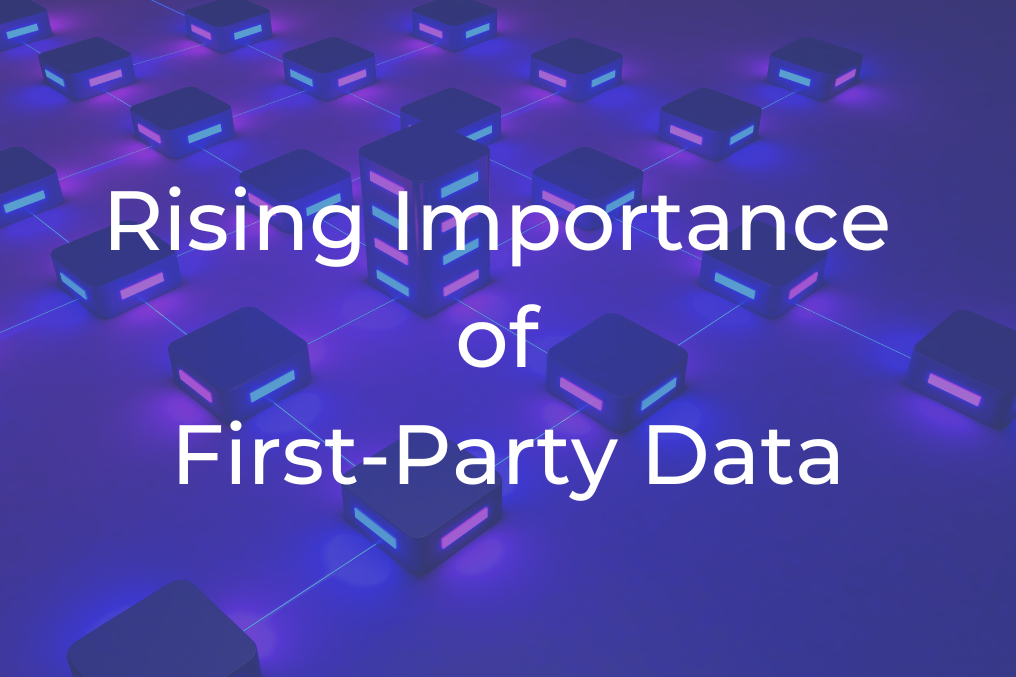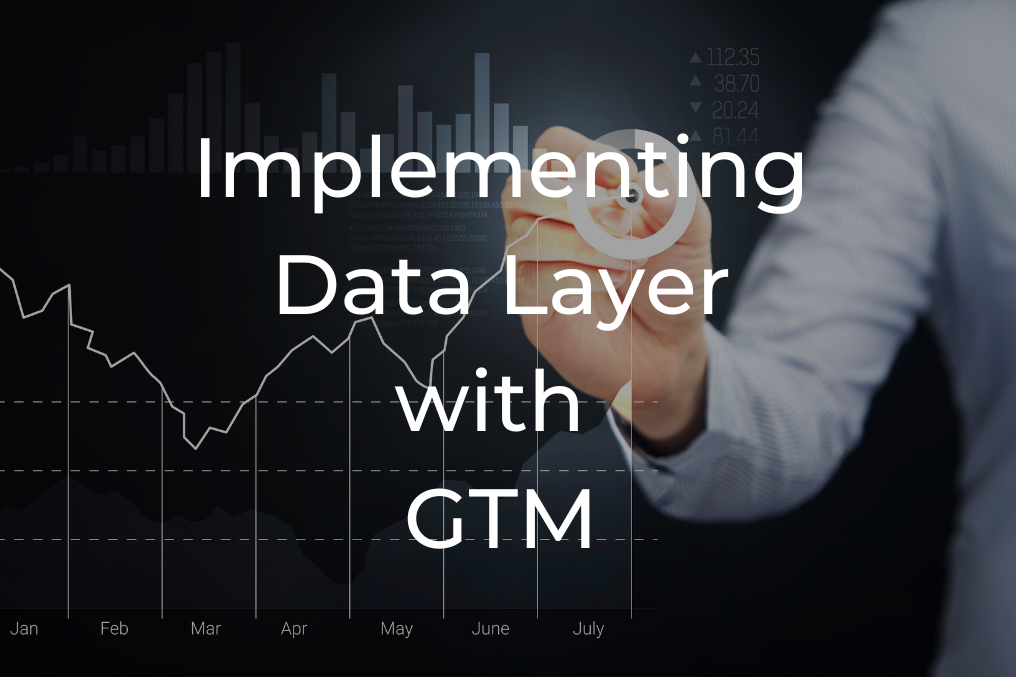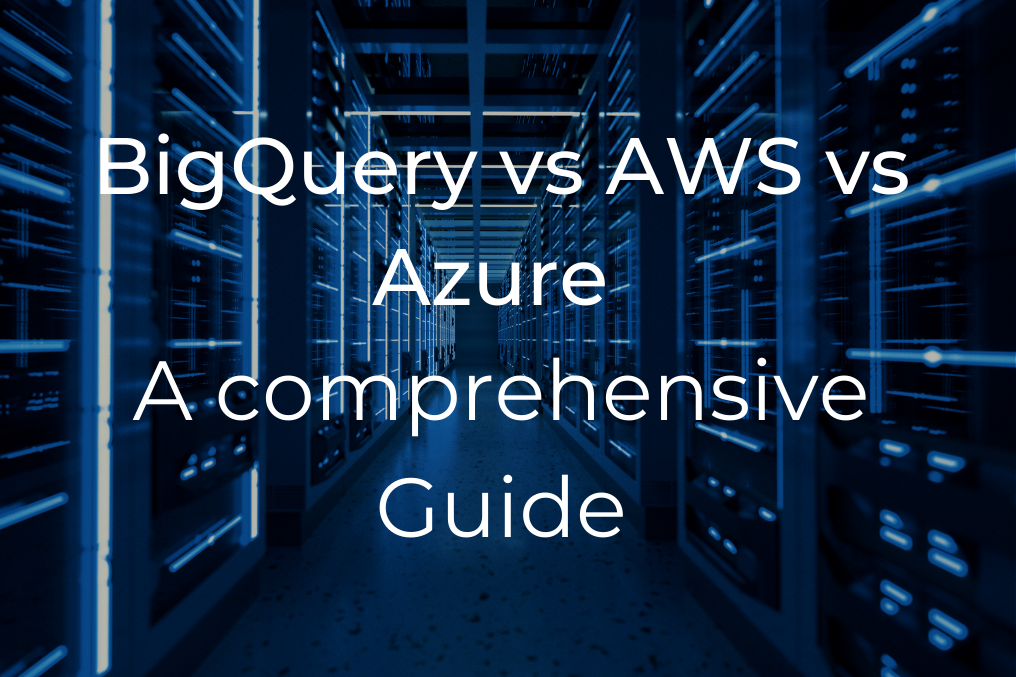
“We’ll help you boost performance, simplify processes, and drive growth with data solutions.”
Future of CDPs: 10 Key Trends for the Next Decade
The Tale of Two Marketers 📊
Meet Sarah and Mike, two digital marketers with very different approaches to customer data. Sarah relied on traditional methods – spreadsheets, multiple disconnected tools, and gut instinct. Mike, on the other hand, embraced a Customer Data Platform (CDP) that unified all his customer data in one place. While Sarah struggled to piece together customer insights from fragmented data sources, Mike’s CDP provided him with a 360-degree view of each customer, enabling personalized experiences that drove remarkable results. By the end of the year, Mike’s campaigns showed a 300% higher ROI than Sarah’s. The difference? A modern CDP that turned data chaos into crystal-clear customer insights.
Table of Contents
Toggle
CDPs have emerged as powerful tools to centralize, analyze, and activate customer data like never before. As businesses increasingly embrace data-driven approaches, CDPs have become essential for personalizing customer interactions, predicting behaviors, and enhancing engagement across channels.
But what does the future hold for CDPs? As we enter a new decade of digital transformation, understanding the upcoming trends in CDPs can help businesses stay competitive. In this guide, we’ll explore the significant trends shaping the future of CDPs and what they mean for organizations of all sizes.
Key Trends Shaping the Future of CDPs
As we stand on the brink of a new era in marketing technology, Customer Data Platforms are evolving faster than ever. Gone are the days when basic customer relationship management tools were enough. Today’s businesses need sophisticated platforms that can collect, unify, and activate customer data in real-time. Let’s explore the transformative trends that will shape CDPs in the next decade.
1. The Growth of AI-Powered CDPs
AI and ML are no longer just buzzwords; they’re becoming integral parts of modern CDPs. Traditionally, CDPs gathered data and presented it in a unified profile, but AI is enhancing what we can do with that data. With AI, CDPs can identify patterns, predict customer behaviors, and provide more accurate insights.
- AI-Driven Personalization: Expect AI-powered CDPs to take personalization to the next level. Rather than just segmenting customers based on past behaviors, AI can predict future preferences, making interactions more relevant. For example, an AI-driven CDP might recommend products based on predicted needs rather than simple browsing history.
- Advanced Predictive Analytics: CDPs of the future will use predictive analytics for deeper insights. Machine learning algorithms will analyze customer data in real time, predicting behaviors like churn, product affinity, and lifetime value. Businesses will then be able to act preemptively rather than reactively.
Current State:
- Basic segmentation
- Rule-based personalization
- Manual intervention needed
Future Trends:
- Hyper-Personalization at Scale
- AI-driven individual customer journeys
- Real-time content adaptation
- Predictive next-best-action recommendations
- Advanced Machine Learning Integration
- Automated segment discovery
- Behavioral pattern recognition
- Anomaly detection and proactive alerts
Real-World Impact:
Netflix’s recommendation engine, powered by AI-driven CDP capabilities, drives 80% of content discovery on their platform. Expect similar levels of personalization across all industries.
Key Insight: Gartner predicts that by 2025, over 80% of marketers will rely on AI-driven insights for personalization, marking a massive shift toward intelligent CDPs.
2. Data Privacy and Security as Core Features
As data privacy regulations become stricter worldwide, future CDPs must prioritize privacy and compliance as central features, not afterthoughts. In the wake of GDPR, CCPA, and similar regulations, companies are already grappling with complex data governance.
- Built-In Compliance Tools: In the next decade, CDPs will integrate sophisticated privacy features. These may include automated compliance checks, data anonymization, and real-time consent management. CDPs will have to adhere to strict standards for managing personally identifiable information (PII).
- Data Minimization and Consent Management: Future CDPs will emphasize data minimization, collecting only necessary data to fulfill the purpose. Enhanced consent management, allowing customers to control how their data is used, will also become a core component.
- Privacy by Design: CDPs will adopt a “privacy by design” approach, embedding data protection at every stage. This will ensure that customer data is only accessible by authorized personnel and used ethically.
Key Insight: Experts anticipate that businesses prioritizing privacy will gain customer trust, a critical competitive advantage in the digital age.
3. Greater Focus on Real-Time Data Processing
Today’s customers expect instant responses and real-time personalization. Real-time data processing will become essential for future CDPs, enabling businesses to deliver dynamic content and real-time offers.
- Real-Time Decisioning: Real-time processing will allow CDPs to segment audiences on-the-fly and serve instant recommendations, creating timely interactions based on live data. For example, if a customer has browsed a product on their mobile, a real-time CDP might trigger a relevant email with a personalized discount.
- Customer Journey Orchestration: With real-time data, CDPs can better support journey orchestration, providing customers with tailored messaging across various touchpoints as they move through their journey.
Evolution of Data Processing:
Timeline | Processing Type | Response Time |
Past | Batch | 24+ hours |
Present | Near real-time | Minutes |
Future | Real-time | Milliseconds |
Key Developments:
- Edge computing integration
- Stream processing capabilities
- Instant data activation
- Real-time personalization engines
Key Insight: According to Forrester, companies with real-time decisioning capabilities experience up to 20% higher engagement and conversion rates.
4. The Rise of Vertical-Specific CDPs
A “one-size-fits-all” approach to CDPs doesn’t work for every business. As CDPs mature, industry-specific CDPs tailored to unique needs—like retail, finance, and healthcare—will rise.
- Retail-Specific CDPs: In retail, CDPs will focus on omnichannel engagement, enhancing experiences both online and in-store. With features like inventory synchronization and purchase prediction, retail CDPs will help brands offer seamless experiences.
- Finance and Healthcare: In sectors like finance and healthcare, CDPs will emphasize stringent security protocols and compliance. For finance, CDPs can help create unified profiles without compromising sensitive financial information. Healthcare CDPs will focus on patient data privacy, personalized care, and compliance with regulations like HIPAA.
Evolution of Identity Resolution:
- From device-centric to person-centric
- Advanced probabilistic matching
- Universal ID solutions
- Privacy-compliant tracking alternatives
Benefits:
- Consistent cross-channel experiences
- Accurate attribution modeling
- Reduced marketing waste
- Enhanced customer understanding
Key Insight: Vertical-specific CDPs will allow businesses to adopt CDPs faster and with more relevant features, reducing the need for extensive customization.
5. Enhanced Customer Identity Resolution
Customer identity resolution—connecting data across channels to form a cohesive profile—will become a focal point. Future CDPs will utilize more sophisticated algorithms to resolve customer identities even when data sources are diverse and fragmented.
- Cross-Device Matching: Expect CDPs to enhance their ability to match customer identities across devices, even as customers increasingly use multiple devices. This capability will enable brands to maintain consistent messaging across channels.
- Anonymous to Known Profiles: Future CDPs will also bridge anonymous visitor data with known customer profiles as visitors sign up or log in, allowing businesses to tailor experiences seamlessly from the very first interaction.
Future Integration Capabilities:
- API-first architecture
- Plug-and-play connectivity
- Universal data standards
- Cross-platform data sharing
Benefits:
- Seamless tool integration
- Reduced technical debt
- Faster time to market
- Enhanced flexibility
Key Insight: With accurate identity resolution, CDPs will enable businesses to deliver relevant messaging while minimizing redundancy, ultimately boosting ROI.

6. Integration with More Data Sources and Emerging Technologies
As customer engagement channels expand, CDPs will integrate with a wider array of data sources. In the future, we’ll see CDPs pulling in data from IoT devices, virtual reality (VR) interactions, and augmented reality (AR) experiences.
- Internet of Things (IoT): CDPs will pull data from IoT devices, allowing brands to analyze real-world product interactions. For instance, wearable data could be integrated into fitness brand CDPs, helping personalize recommendations based on exercise patterns.
- Augmented and Virtual Reality: As AR and VR technology evolves, CDPs could incorporate data from these immersive experiences. A retailer might use data from an AR app to understand which products a customer tried virtually, then follow up with tailored recommendations.
Emerging Data Sources:
- Smart speakers
- Connected devices
- Wearables
- IoT sensors
- Vehicle data
Applications:
- Voice commerce optimization
- Contextual marketing
- Location-based services
- Connected experience delivery
Key Insight: By integrating with emerging technologies, CDPs will help businesses create more immersive, contextual experiences that keep pace with changing consumer behaviors.
7. Small and Medium-Sized Business (SMB) Accessibility
As CDPs become more essential for personalization and data-driven decision-making, vendors are increasingly targeting small and medium-sized businesses. While traditional CDPs often cater to enterprises with large budgets, the future will bring affordable, scalable CDP solutions for SMBs.
- Self-Service CDPs: CDPs tailored for SMBs will emphasize ease of use, with intuitive interfaces and self-service setup, enabling small teams to leverage powerful customer insights without extensive technical expertise.
- Scalability and Flexibility: SMB-focused CDPs will offer modular pricing and the flexibility to add features as businesses grow. This ensures that even smaller companies can access enterprise-grade capabilities as needed.
Key Insight: As more vendors target SMBs, expect to see a democratization of CDPs, allowing even the smallest brands to harness data for personalized marketing.
8. The Evolution of Customer Data Activation
The CDPs of the future won’t just collect data—they’ll be the engine driving actionable insights. Businesses will be able to use CDP data to guide everything from product development to customer service enhancements.
- Enhanced Segmentation and Targeting: CDPs will move from basic segmentation to more advanced behavioral targeting, allowing businesses to serve unique messages based on customer intent and engagement history.
- Predictive Customer Engagement: CDPs will become more predictive, identifying the right time and place to engage customers. For instance, if data suggests a user prefers email offers on weekdays, the CDP could automatically schedule emails for optimal engagement.
Key Insight: By turning raw data into actionable insights, future CDPs will help businesses move from data collection to data activation, improving efficiency and outcomes.
9. Blockchain Integration
Integrating blockchain technology into Customer Data Platforms (CDPs) can significantly enhance trust and transparency, offering businesses a robust framework for managing customer data. Below are key points explaining how blockchain integration can transform CDPs, focusing on trust and transparency.
- Enhanced Data Integrity: Blockchain technology operates on a decentralized ledger system, which ensures that once data is recorded, it cannot be altered or deleted without consensus from the network. This immutability enhances data integrity, as businesses can trust that the customer data stored in their CDP is accurate and unaltered. By leveraging blockchain, organizations can provide verifiable proof of data authenticity to customers and stakeholders, thereby building trust.
- Transparent Data Management: With blockchain, all transactions involving customer data are recorded in a transparent manner. This means that customers can see how their data is being used and shared. By providing visibility into data handling practices, businesses can foster a sense of security among customers, who may be more willing to share their information if they know how it will be utilized. Transparency in data management also helps organizations comply with regulations like GDPR by enabling easier tracking of consent and data usage.
Applications in CDP:
- Verified customer identity
- Transparent data usage
- Secure data sharing
- Token-based incentives
- Decentralized identity management
10. Increased Focus on Customer Experience and Retention
With competition at an all-time high, future CDPs will shift from a sole focus on acquisition to enhancing customer retention and loyalty. Retaining customers is often more cost-effective than acquiring new ones, and CDPs will play a critical role in retention strategies.
- Customer Health Scoring: CDPs will help businesses track engagement levels, allowing for customer health scoring that indicate which customers might be at risk of churn.
- Loyalty and Rewards Personalization: CDPs will provide insights into the most effective loyalty strategies, enabling brands to offer personalized rewards and experiences based on customer preferences.
Key Insight: By enhancing retention-focused strategies, CDPs can help businesses strengthen customer loyalty, reducing churn and improving lifetime value.
Best Practices for Future-Proofing Your CDP Strategy
Future-proofing your CDP strategy is essential for organizations looking to leverage customer data effectively while adapting to changing market dynamics. Below are best practices that can help ensure your CDP strategy remains relevant and effective over time.

1. Start with Clear Objectives
- Define Success Metrics: Establishing clear success metrics is crucial for measuring the effectiveness of your CDP strategy. Metrics should be specific, measurable, achievable, relevant, and time-bound (SMART). For example, if your goal is to enhance customer engagement, you might track metrics like customer retention rates, engagement scores, or conversion rates from marketing campaigns. These metrics will provide a concrete basis for evaluating the impact of your CDP initiatives.
- Align with Business Goals: Your CDP objectives should align with broader business goals to ensure that the platform contributes to overall organizational success. This alignment helps prioritize initiatives that drive value and ensures that resources are allocated effectively. For instance, if a business goal is to increase sales by 20%, the CDP strategy should focus on enhancing customer segmentation and targeting efforts that directly support this goal.
- Set Realistic Timelines: Establishing realistic timelines for achieving your CDP objectives is essential for maintaining momentum and accountability. Timelines should consider the complexity of data integration, team readiness, and technology deployment. Setting phased timelines allows for incremental progress and adjustments based on early results and feedback.
- Establish KPIs: Key Performance Indicators (KPIs) are specific metrics used to evaluate the success of your CDP strategy. These should be closely tied to your success metrics and business goals. For example, if your objective is to improve customer insights, relevant KPIs might include the number of actionable insights generated from data analysis or the speed at which data can be accessed and utilized by marketing teams.
2. Focus on Data Quality
- Implement Data Validation: Data validation processes ensure that the information being collected and utilized in your CDP is accurate and reliable. Implementing validation rules at the point of data entry can help prevent errors and inconsistencies. For instance, using dropdown menus for certain fields can reduce input errors while ensuring that data adheres to predefined formats.
- Maintain Data Hygiene: Regularly cleaning and updating customer data is vital for maintaining its quality over time. This includes removing duplicates, correcting inaccuracies, and updating outdated information. Establishing a routine for data hygiene helps ensure that marketing efforts are based on current and accurate customer profiles, which enhances targeting effectiveness.
- Regular Audits: Conducting regular audits of your customer data helps identify issues related to quality and compliance. Audits can uncover gaps in data collection processes or highlight areas where data may not meet established standards. Regular assessments allow organizations to take corrective actions proactively, ensuring their CDP remains a reliable source of truth.
- Quality Monitoring: Continuous monitoring of data quality is essential for maintaining high standards over time. Implementing automated monitoring tools can help track key quality metrics such as completeness, accuracy, and consistency. By setting up alerts for anomalies or significant deviations from expected patterns, organizations can address issues before they impact decision-making.
3. Ensure Scalability
- Cloud-Native Architecture: Adopting a cloud-native architecture allows organizations to scale their CDP infrastructure easily as their data needs grow. Cloud solutions provide flexibility in terms of storage capacity and processing power, enabling businesses to handle increasing volumes of customer data without significant upfront investments in hardware.
- Flexible Infrastructure: A flexible infrastructure supports various integration scenarios and can adapt to changing business requirements. This means being able to add new data sources or modify existing ones without extensive reconfiguration. Flexibility also extends to accommodating different types of analytics tools or marketing technologies as they emerge.
- Performance Optimization: Regularly optimizing performance ensures that the CDP can handle large datasets efficiently without lagging or downtime. This includes optimizing queries, indexing frequently accessed data fields, and utilizing caching strategies where appropriate. Performance optimization enhances user experience by providing quick access to insights when needed.
- Growth Planning: Planning for growth involves anticipating future data needs based on projected business expansion or changes in customer behavior. Organizations should regularly review their capacity requirements and adjust their infrastructure accordingly to avoid bottlenecks as they scale operations.
Conclusion: Preparing for a CDP-Driven Future
The evolution of CDPs over the next decade will create unprecedented opportunities for businesses to leverage data. With AI-driven insights, real-time capabilities, enhanced privacy measures, and a stronger focus on customer experience, CDPs are poised to become indispensable tools for customer engagement.
As businesses prepare for this data-rich future, the key to success lies in selecting a CDP that aligns with their unique needs, keeping an eye on evolving trends, and committing to continuous improvement. The coming years will undoubtedly bring exciting developments, making it an opportune time for companies to embrace CDPs as a cornerstone of their digital transformation strategies.
As we move forward into this new era defined by data-driven decision-making, those who harness the power of Customer Data Platforms will undoubtedly lead the way in creating personalized experiences that resonate deeply with consumers.
Ranjan Kashyap
“We’ll help you boost performance, simplify processes, and drive growth with data solutions.”


Elevate Your Shopify Analytics: Implementing a Data Layer with GTM

GA4 and Server-Side Tagging: The Next Big Thing in Data Analytics in 2025 🚀

Cloud Data Warehouse Showdown: BigQuery, AWS Redshift, and Azure Synapse

Optimizing ETL/ELT Processes for Enhanced Data Quality: Strategies for Businesses

Unlock 2025 Marketing Potential: The Ultimate Guide to Using GA4 for Smarter Strategies
Explore related posts.

From Cookies to Customer Loyalty: The Rising Importance of First Party Data

Elevate Your Shopify Analytics: Implementing a Data Layer with GTM

GA4 and Server-Side Tagging: The Next Big Thing in Data Analytics in 2025 🚀

Cloud Data Warehouse Showdown: BigQuery, AWS Redshift, and Azure Synapse

Optimizing ETL/ELT Processes for Enhanced Data Quality: Strategies for Businesses

